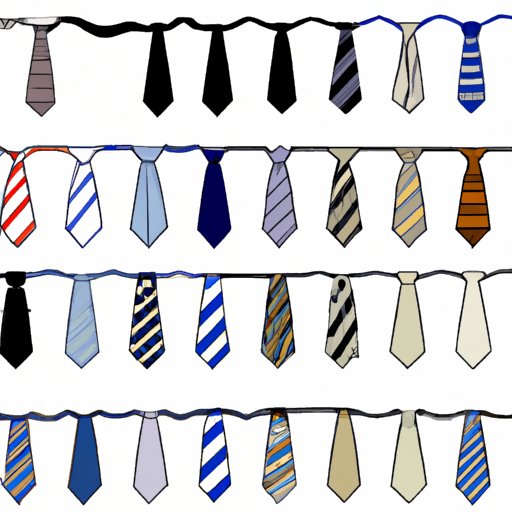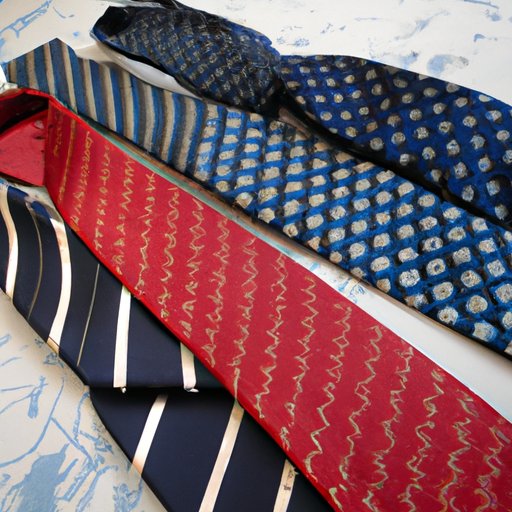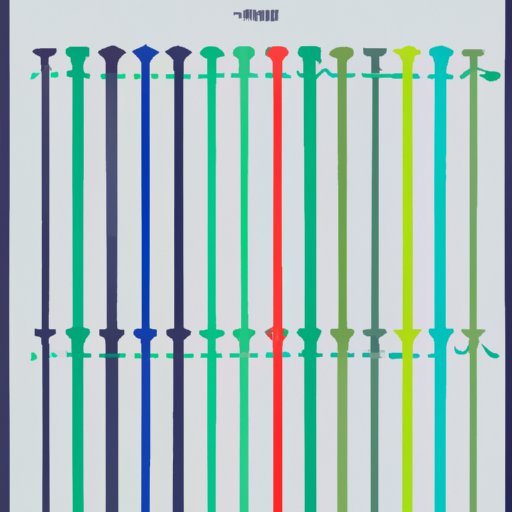Introduction
The tie is a timeless fashion staple that has been around for centuries. But when were ties invented? That’s a question that many people may not know the answer to, so let’s take a look at the history of this classic accessory.
A tie is defined as a long piece of cloth worn around the neck, usually knotted at the throat, and typically made from silk or other fine fabrics. It is often considered a fashionable item and is commonly used to complete a formal outfit. The tie has become an iconic symbol of men’s fashion, but its origins are somewhat mysterious.
In this article, we will explore when ties were invented and how they have evolved over time. We will look at the earliest examples of ties, the development of the modern necktie, and the cultural significance of this classic accessory.

History of Ties: A Timeline of When Ties Were Invented
The earliest known examples of ties date back to the Bronze Age, when primitive scarves were used to keep warm and protect the neck from the elements. However, these scarves were not the same as the ties we know today. It wasn’t until the 17th century that the modern necktie began to emerge.
At this time, Croatian mercenaries were fighting in the Thirty Years’ War and had adopted a type of scarf called a cravat. This was a narrow strip of fabric, usually linen or lace, that was tied around the neck in a bow or knot. This style of neckwear quickly became popular among the upper classes in Europe and was soon adopted by the French aristocracy.
By the 19th century, the necktie had become a must-have accessory for the well-dressed gentleman. During this period, ties were made from luxurious fabrics such as silk and velvet and were often decorated with intricate embroidery and other embellishments. By the early 20th century, ties had become a standard item in any man’s wardrobe.

A Look at the Evolution of the Tie: From Ancient Times to Modern Day
The modern necktie has come a long way since its humble beginnings in the Bronze Age. Let’s take a look at how it has evolved over time.
Ancient Origins of the Tie
The earliest known examples of ties date back to the Bronze Age, when primitive scarves were used to keep warm and protect the neck from the elements. These scarves were not the same as the ties we know today, but they were the first step in the evolution of the modern necktie.
Development of the Modern Necktie
The modern necktie can be traced back to the 17th century, when Croatian mercenaries fighting in the Thirty Years’ War adopted a type of scarf called a cravat. This style of neckwear quickly became popular among the upper classes in Europe and was soon adopted by the French aristocracy.
By the 19th century, the necktie had become a must-have accessory for the well-dressed gentleman. During this period, ties were made from luxurious fabrics such as silk and velvet and were often decorated with intricate embroidery and other embellishments. By the early 20th century, ties had become a standard item in any man’s wardrobe.
Exploring the Origins of the Tie: Where and When Was It First Worn?
Now that we’ve explored the history of the tie, let’s take a look at the origins of this classic accessory. Where and when was the tie first worn?
The First Recorded Use of a Necktie
The first recorded use of a necktie dates back to 1618, when Croatian mercenaries fighting in the Thirty Years’ War adopted a type of scarf called a cravat. This style of neckwear quickly spread throughout Europe and was soon adopted by the French aristocracy.
Popularity of the Tie in Different Cultures
The tie has been a popular accessory in many cultures throughout history. In the United States, ties were a staple of men’s fashion in the early 20th century. In Japan, ties were traditionally worn as part of a formal kimono ensemble. In India, ties are often worn with traditional sherwani outfits.
An Exploration of the Invention of the Tie: How Did This Classic Accessory Come About?
Now that we know where and when the tie was first worn, let’s take a look at how it came about. What was the process of invention like?
Early Prototypes of the Tie
The modern necktie has its roots in the cravat, which was a type of scarf worn by Croatian mercenaries in the 17th century. However, the modern necktie as we know it today did not emerge until the 19th century. During this period, different prototypes of the tie were developed, including the four-in-hand tie, the bow tie, and the ascot tie.
Designers Who Contributed to the Development of the Tie
Throughout history, there have been many designers who have contributed to the development of the tie. Some of the most influential include Beau Brummell, who popularized the four-in-hand tie in the early 19th century; Jesse Langsdorf, who invented the modern necktie in 1924; and Emilio Pucci, who popularized the printed tie in the 1960s.
Tracing the History of the Necktie: Discovering the Story Behind Its Creation
The modern necktie has a long and fascinating history, dating back to the Bronze Age. Let’s take a look at some of the different styles and varieties of ties, as well as their cultural significance.
Different Styles and Varieties of Ties
Ties come in a variety of styles and materials, ranging from classic silk designs to more modern synthetic materials. Popular styles include the four-in-hand tie, the bow tie, and the ascot tie. Some ties are decorated with intricate embroidery or other embellishments, while others feature bold prints and colors.
Cultural Significance of the Necktie
The tie has been a popular accessory in many cultures throughout history. In some cultures, it is seen as a sign of respect and authority, while in others it is simply viewed as a stylish addition to an outfit. Whatever the case may be, the tie has become an iconic symbol of men’s fashion.
Conclusion
The tie is a timeless fashion staple that has been around for centuries. In this article, we explored when ties were invented and how they have evolved over time. We looked at the earliest examples of ties, the development of the modern necktie, and the cultural significance of this classic accessory.
We discovered that the modern necktie can be traced back to the 17th century, when Croatian mercenaries fighting in the Thirty Years’ War adopted a type of scarf called a cravat. We also explored the different styles and varieties of ties, as well as their cultural significance.
From its ancient origins to its modern-day variations, the tie has come a long way. It has become an iconic symbol of men’s fashion, and its timeless appeal shows no signs of fading.
(Note: Is this article not meeting your expectations? Do you have knowledge or insights to share? Unlock new opportunities and expand your reach by joining our authors team. Click Registration to join us and share your expertise with our readers.)
